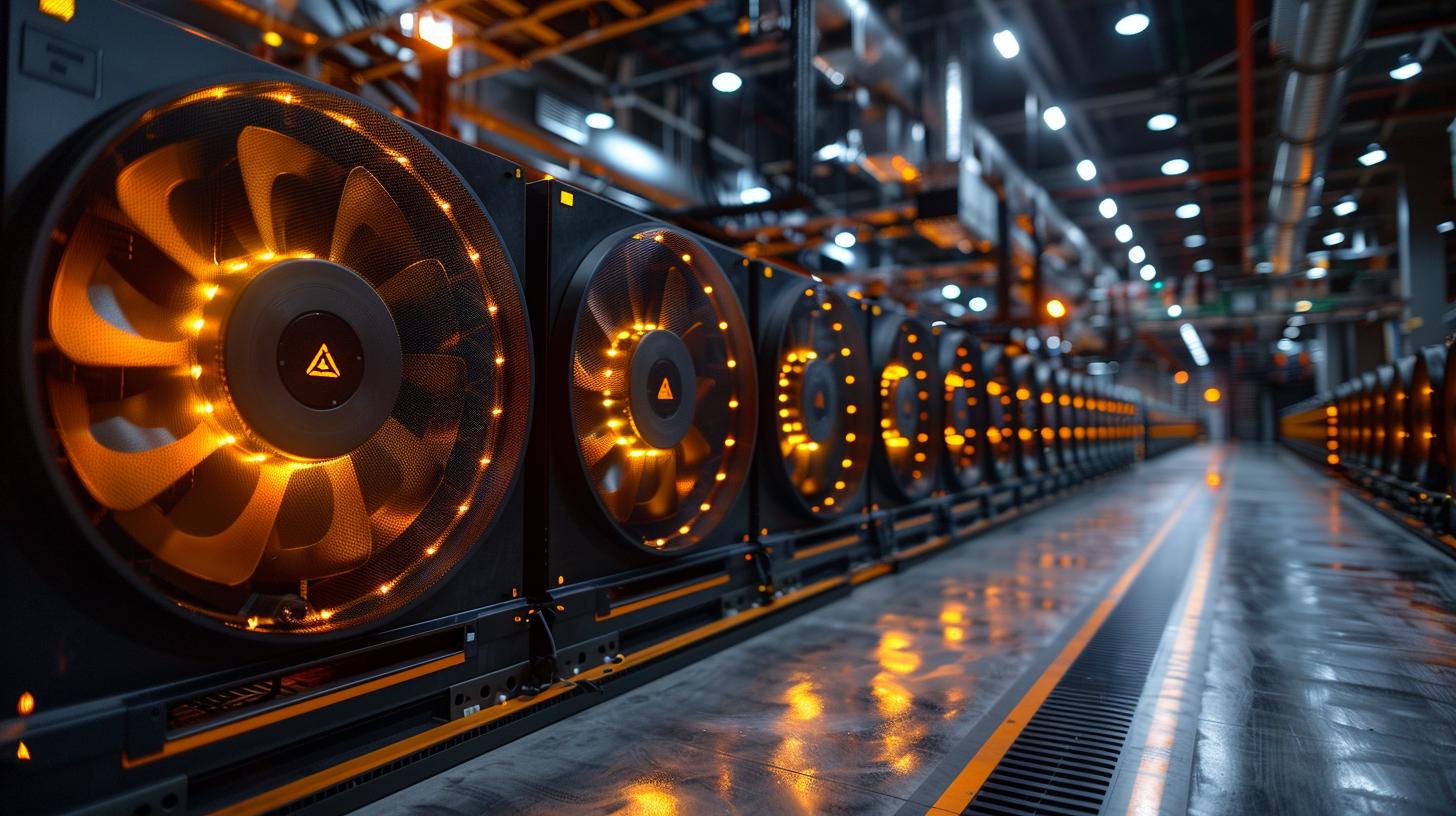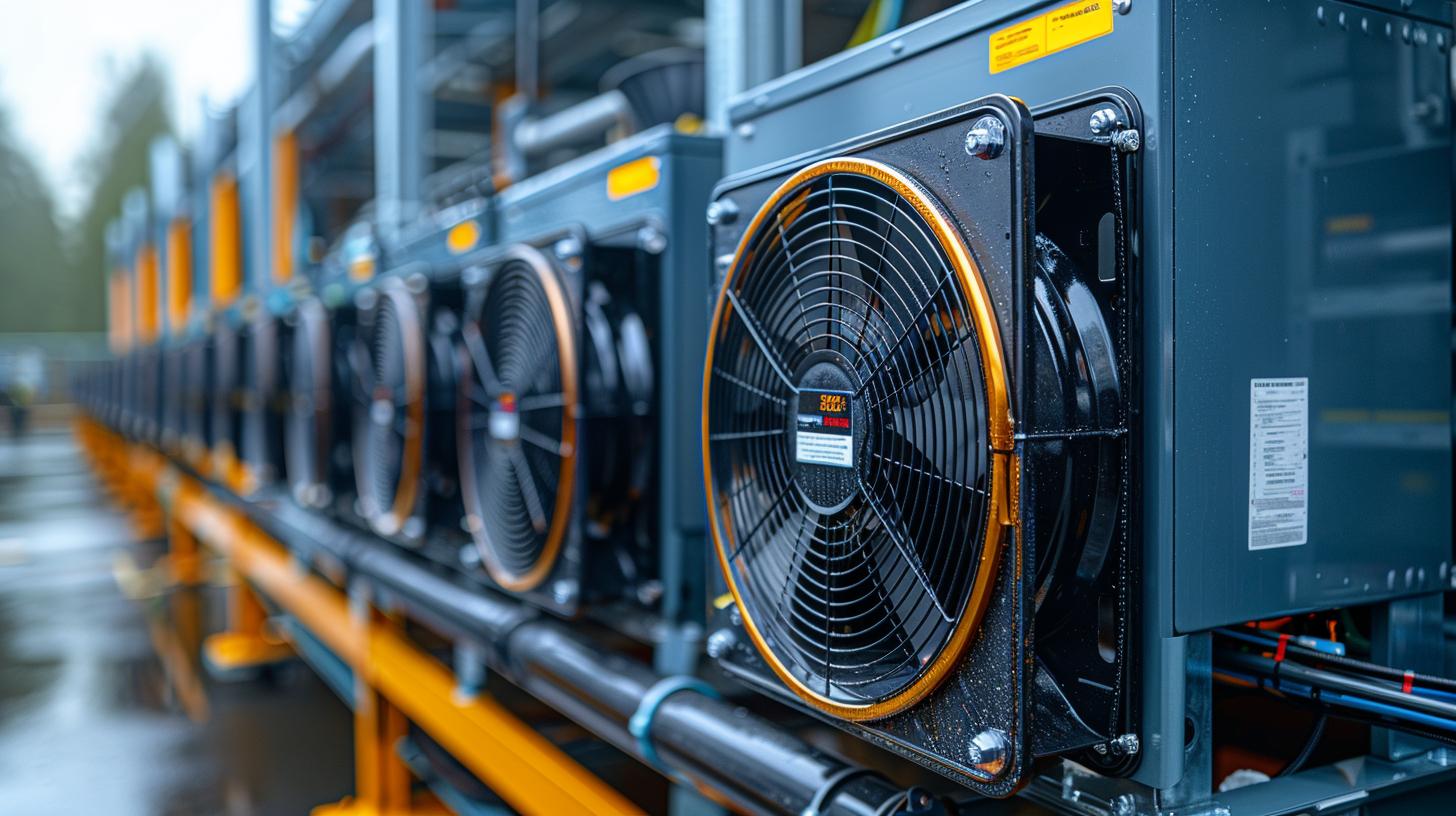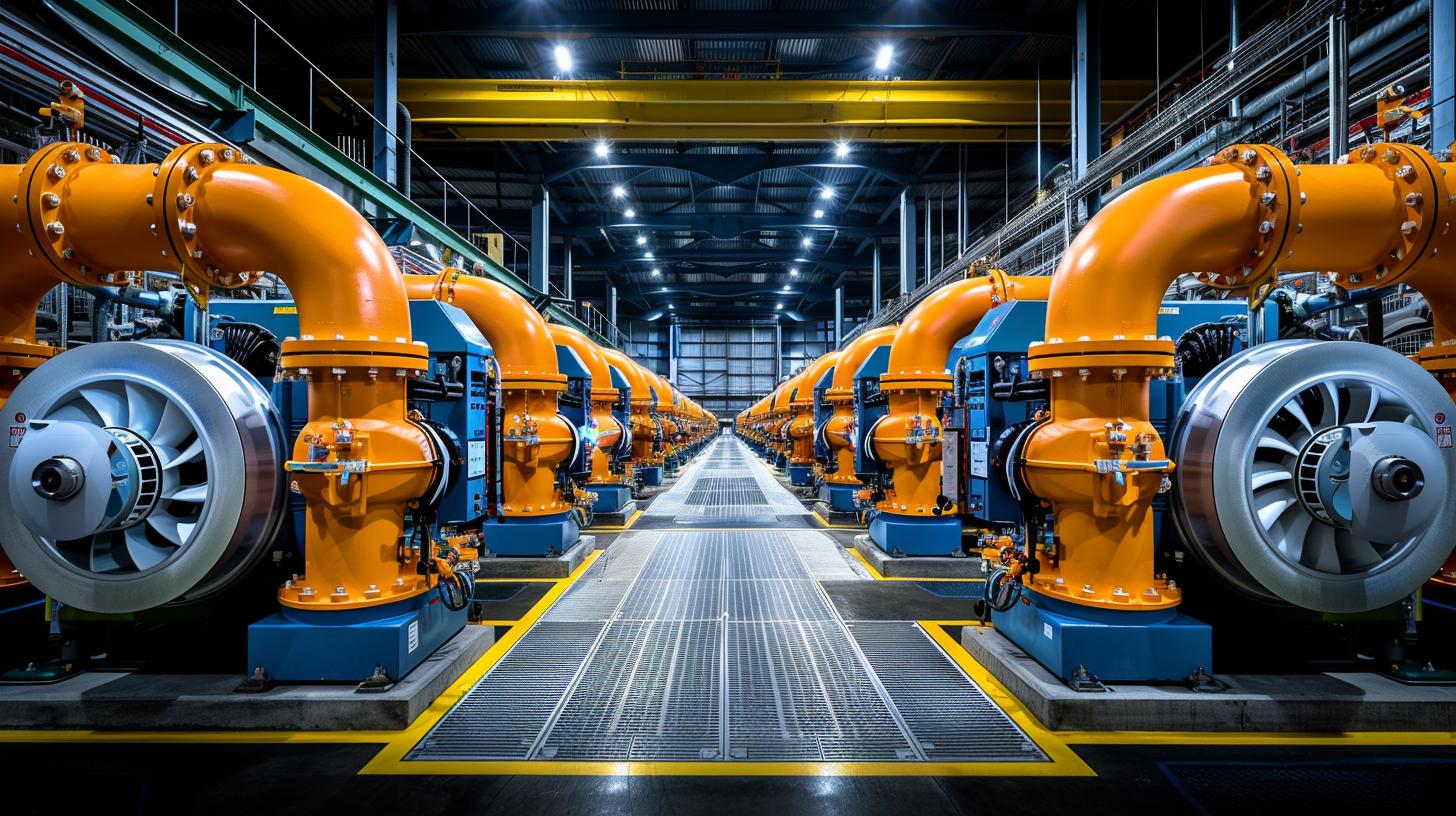The world of Ethereum mining is continually evolving. One crucial aspect which has recently come into focus is ventilation energy efficiency for Ethereum mining. As cryptocurrency gains more traction, the processes backing its existence, like mining, consumes considerable energy on a global scale. Thus, addressing power consumption and optimizing use has become of utmost importance.
Ethereum mining is a process that involves complex computations to validate transactions and add them to the public ledger or blockchain. It supports the functioning of the Ethereum network and provides lucrative profits to miners worldwide. However, these rewards come with a high price – energy consumption.
The process requires powerful computer systems working round-the-clock that consume significant electricity quantities leading to increased carbon footprints. According to a Cambridge Centre for Alternative Finance report in 2020, Bitcoin (another popular cryptocurrency) mining consumes electricity similar to Argentina’s total energy production – emphasizing the environmental implications of crypto mining practices.
Enter efficient ventilation systems – a potential game-changer for reducing energy use in Ethereum mining operations. The intense computational processes cause mining equipment to produce substantial heat, requiring appropriate cooling systems for effective operation.
Until now, most solutions revolved around traditional air conditioning units and fans that eat up even more power leading to inefficiencies. Fortunately, innovative companies like Data AirFlow are making strides towards revolutionizing this domain by incorporating ventilation systems specifically designed for crypto-mining applications offering improved energy efficiency without compromising equipment performance or lifespan; paving the path for a more sustainable future in Ethereum Mining.
The Current Status of Ventilation Energy Efficiency in Ethereum Mining
Efficient ventilation systems can profoundly impact Ethereum mining operations. To understand how these improvements can be made, it’s essential to evaluate the current status of ventilation energy efficiency in Ethereum mining. Examining present energy usage trends reveals some startling numbers that manifest the urgency for better methods of cooling in Ethereum mining setups.
Ethereum mining involves solving complex mathematical problems using powerful hardware components such as GPU cards. These components generate immense quantities of heat while running and thus require adequate cooling to maintain optimal performance. Currently, most setups make use of conventional air conditioning or liquid cooling systems. While these methods provide adequate cooling, they have significant downsides:
- High energy consumption: AC systems draw a large amount of power to cool the machines down, alongside the already high-energy requirements for operating mining rigs.
- Limited Scalability: As the size of the mining operation grows, it becomes increasingly challenging to keep all components at optimal temperatures using traditional approaches.
The above practices disproportionately contribute to high power expenditures in Ethereum mining endeavours. Given that electricity is amongst one of the highest recurrent costs for any cryptocurrency mining setup including Ethereum, inefficient practices in ventilation and cooling symbolize waste, leading to unnecessary financial burdens and environmental impacts.

Observation shows a vague awareness about ventilation energy efficiency for ethereum mining within small and medium-sized enterprises involved with cryptocurrency extraction. However, there exists a lack of comprehensive efforts or initiatives targeted at improving this situation within larger organizations or on an industry-wide scale. This disparity indicates an untapped potential market for innovative solutions like Data AirFlow that prioritize efficiency over outdated operational norms.
The use cases currently available highlight instances where transitional efforts towards more environmentally friendly policies have led not only to cost savings but also improved overall operational efficiencies. However, a coherent shift industry-wide will require research into further systemic changes geared towards sustainability and economic feasibility. As such, the necessity of incorporating efficient ventilation systems in Ethereum mining is clear, opening new avenues for innovation and development.
Ventilation Energy Efficiency for Ethereum Mining
In recent years, the conversation surrounding the energy efficiency in cryptocurrency mining has been amplified. This pertains to realizing that mining consumes a significant amount of electricity and consequently generates vast amounts of heat. Therefore, a paradigm shift is starting to take place whereby mining operations are focusing more on their carbon footprint by investing in ventilation energy efficiency for Ethereum mining.
Ethereum mining, in particular, requires strong computational power which, in turn, creates high levels of heat. With the rise of Ethereum as one of the most widely used cryptocurrencies globally comes an increased focus on effective ventilation for these systems.
Ethereum mining rigs rely heavily on well-constructed and efficient cooling solutions to remain fully functional and optimize yield. Mitigating this heat is possible through intelligent usage and maintenance of appropriate ventilation systems-an aspect now gaining traction within the cryptocurrency landscape.
A few case studies demonstrate successful applications of such energy-efficient ventilation systems in Ethereum mining settings. These instances underline tangible results in reducing energy consumption while maintaining vigorous performance necessary for optimal crypto-mining outcomes. For instance, large-scale commercial miners have already started adopting specialized hardware known as Application-Specific Integrated Circuits (ASICs), made uniquely for particular mining algorithms like Ethereum’s Ethash proof-of-work system which produce less heat and require less ventilation.
| Energy-Efficient Devices | Reduction in Heat Production (%) |
|---|---|
| Application-Specific Integrated Circuits (ASICs) | 30%-50% |
| Graphical Processing Units (GPUs) with advanced coolers | 10%-20% |
Moreover, incorporation of sophisticated ambient temperature control setups accounts for greater proficiency at deflecting excessive heat while consuming lesser electricity-allowing for a marked improvement in the energy efficiency of Ethereum mining operations. Therefore, improving ventilation systems is not just an add-on, but crucial to enhancing overall performance and sustainability in cryptocurrency mining. While still emerging as a priority, it is clear that the future of Ethereum mining entails a strong emphasis on energy-efficient ventilation systems.

Understanding Data AirFlow
Introduction to Data AirFlow and Its Services
Data AirFlow is an accredited leader in the design and provision of energy-efficient ventilation systems specifically tailored for Ethereum mining operations. Established with a strong vision to revolutionize crypto mining ventilation, the company seeks to lower energy consumption associated with this process while promoting environmentally friendly practices. It does so by offering comprehensive solutions that manage thermal dynamics and control internal environments of data centers dedicated to mining.
Data AirFlow recognizes the distinct needs of Ethereum miners in relation to thermal management. The intense computational power involved in verifying blockchain transactions can lead to significant heat production within server facilities, necessitating proper cooling methods. Not only does effective cooling help maintain ideal operating temperatures for miner hardware, but it also plays a crucial part in enhancing the longevity of server components.
Data Airflow’s Approach Towards Enhanced Ventilation Energy Efficiency
Data AirFlow enhances ventilation energy efficiency for Ethereum mining through the development of its leading-edge technology known as “Directed Venting Technology” (DVT). By redirecting air towards heat generative components within servers, DVT enables precision cooling – making it a more targeted and subsequently, efficient approach in comparison to traditional center-wide cooling systems.
Conceptually, focusing where the cool air goes results in not only better operational conditions for hardware but reduces instances where cooling infrastructure may be working overtime due to inefficient distribution – saving precious electrical load used up in unnecessary venting. This focus on specific component cooling effectively marries hardware endurance with operational cost-effectiveness, creating an attractive value proposition.
The Science Behind Data AirFlow’s Systems
The science driving Data AirFlow’s systems falls under two broad categories: fluid dynamics and thermodynamics. Fluid dynamics deals with how air moves around obstructive objects – like server racks – allowing precise routing towards heated areas within a facility. On the other hand, thermodynamics focuses on heat transfer principles – ensuring cool air absorbs as much thermal energy as possible before being expelled.
The integration of these principles within ventilation designs guarantees efficient use of energy involved in the cooling process. Data AirFlow’s ventilation frameworks come incorporated with advanced automation controls. These systems can independently modulate airflow rates based on real-time data, striking an admirable balance between hardware needs and environmental concerns – resulting in optimal efficiency throughout Ethereum mining processes.
Implications and Impact of Leading-Edge Ventilation Systems on Future Ethereum Mining
Implementing Data AirFlow’s ventilation systems presents numerous potential benefits, including projected energy savings. Currently, Ethereum mining consumes a significant amount of power, resulting in hefty electricity bills for miners. Inevitably, the introduction of ventilation energy efficiency by Data AirFlow could yield substantial cost savings for miners over time. By consuming less electricity while maintaining the same level of output, Data AirFlow’s systems portend an innovation capable of enhancing the economic viability and sustainability of Ethereum mining operations.

Beyond cost savings, more efficient energy use has notable environmental implications. Ethereum mining’s current method employs a Proof-of-Work system which requires a massive amount of computing power to solve complex mathematical puzzles, subsequently resulting in high energy consumption and carbon emissions.
However, transitioning to ventilation energy efficiency for Ethereum mining would inherently result in reduced carbon footprints hence mitigating global climatic impacts associated with this critical operation. Miners could sustain their activities without the accompanying guilt of further fueling unfriendly ecological practices.
Finally and crucially, improved ventilation systems hold the potential to enhance overall performance within the arena of Ethereum mining. Highly efficient HAVC solutions furnished by Data airflow could serve to ensure optimal operational conditions within server environments thereby minimizing chances of overheating and cumbersome maintenance processes linked with such occurrences.
Cooling is critical not just for device longevity and preventing hardware from burning out but also for maintaining high hashrates that are pivotal in mining efficiency especially considering how competitive it has become to earn rewards under the Proof-of-Work algorithm employed by platforms like Ethereum.
Conclusion
As we survey the rapidly evolving world of Ethereum mining, it’s clear that improving ventilation energy efficiency for ethereum mining has taken on an urgent significance. The environmental impact of energy-intensive cryptocurrency mining is a growing concern, and efforts to improve efficiencies represent a key strategy in mitigating these effects.
Hence, the focus should now shift towards integrating sustainable methods into our current practices. The role of effective ventilation systems, as seen through the lens of this analysis, is paramount not just for maintaining equipment functionality in mining facilities but also for fostering energy efficiency.
The case studies and examples explored throughout this discussion underscore Data AirFlow’s groundbreaking work in this area. By leveraging cutting-edge technology and science principles, Data AirFlow has crafted ventilation solutions specifically designed for the unique needs of Ethereum mining operations.
These system adaptations have shown remarkable results in reducing energy consumption without compromising on increased operational performance or output. As such, Data AirFlow exemplifies a prominent player pushing boundaries and driving worthwhile change within the folds of Bitcoin mining and towards a more sustainably-focused future.
Heading forward into this promising new era of efficiency-conscious cryptocurrency mining, we can expect to see further advancements along similar lines pioneered by companies like Data AirFlow. As more businesses recognize the economic viability and environmental necessity associated with adopting improved ventilation systems, these technologies are poised to become mainstream fixtures within mining operations across the globe.
In turn, Ethereum along with other cryptocurrencies will advance as both sustainable and economically appealing assets providing their vast user network benefits beyond financial profits – ultimately carving out a viable path for an energy-efficient future in cryptocurrency mining.





